Picture a loyal companion with silky hair framing their face like royalty. For many pet lovers, the Shih Tzu’s luxurious coat is part of their charm—but it also raises questions. How much maintenance does that flowing mane require? Are these dogs a good fit for homes sensitive to shedding?
Originating in Tibet over 1,000 years ago, these small dogs were bred to resemble lions, earning the name “Shih Tzu” (meaning “little lion”). Their double-layered coat—a soft underlayer and longer topcoat—helped them thrive in harsh climates. Later, Chinese emperors adored them as symbols of luxury, cementing their status as prized companions.
Today, Shih Tzus remain popular for their affectionate nature and hypoallergenic qualities. While no dog is completely non-shedding, their hair tends to stay attached to the coat rather than falling out freely. Seasonal changes or hormonal shifts may cause mild shedding, but regular brushing minimizes loose strands. Those considering a mixed breed should note that crossbreeds may inherit different shedding traits.
Understanding their unique coat needs ensures these lively pups stay healthy and comfortable. From puppy cuts to full-length styles, grooming choices impact shedding management. Let’s explore how to keep your furry friend’s hair vibrant while maintaining a clean home.
Understanding Shih Tzu Grooming and Coat Characteristics
The secret to a Shih Tzu’s luxurious coat lies in its two-layered design. Unlike many breeds, these small companions have hair that grows similarly to human locks, requiring consistent care to stay healthy and minimize shedding.
Exploring the Two-Layer Hair Structure
Shih Tzus possess a fine topcoat and a feathery undercoat. The outer layer flows straight or slightly wavy, protecting against dirt and weather. Beneath lies a soft underlayer that insulates their body temperature. This dual system traps loose strands instead of releasing them freely, contributing to their low-shedding reputation.
Seasonal Changes and Shedding Triggers
Warmer months often trigger mild shedding as the undercoat thins for temperature regulation. Brushing becomes crucial during spring and summer transitions. A slicker brush used 3-4 times weekly removes trapped hair before it spreads around your home.
Environmental factors like indoor heating can dry their coat, increasing breakage. Regular baths with moisturizing shampoos and conditioner sprays help maintain elasticity. For puppies, early grooming sessions build positive associations with coat care routines.
Exploring Do Shih Tzus Shed: Facts and Myths
Many prospective pet owners wonder how these small companions stack up against other breeds regarding loose hair. While no dog is entirely shed-free, understanding the nuances helps set realistic expectations.
Comparing Shedding Across Popular Breeds
Shih Tzus shed far less than heavy-shedding breeds like Labradors or Huskies. Their hair grows continuously, similar to Poodles, trapping loose strands within the coat. This contrasts with breeds that release fur seasonally, leaving tumbleweeds on floors.
Mixed-breed dogs with Shih Tzu lineage may inherit varied shedding traits. Regular brushing remains essential regardless of ancestry to prevent matting and distribute natural oils.
Separating Truth From Fiction
A common myth suggests these dogs are hypoallergenic. While their minimal shedding reduces airborne dander, allergens still exist in saliva and skin cells. Allergy sufferers should spend time with the breed before adopting.
Puppies undergo coat changes around six months, often mistaken for excessive shedding. Senior dogs may lose more hair due to slower oil production. Consistent grooming routines adapt to these life stages, keeping their signature look intact while managing loose strands.
Effective Grooming Techniques for Shih Tzu Hair Care
Maintaining a Shih Tzu’s signature coat requires strategic routines. Proper techniques not only enhance their appearance but also address shedding and skin health. Let’s break down the essentials for keeping their hair vibrant and manageable.
Daily Brushing: Tools and Best Practices
Brushing is non-negotiable for these dogs. A slicker brush untangles knots, while a bristle brush smooths the topcoat. Start at the roots, working downward to catch loose hairs. Focus on areas prone to matting, like behind the ears and under the legs.
Short sessions (5–10 minutes) prevent stress. For long coats, use a detangling spray. Opt for a “puppy cut” if time is limited—it simplifies maintenance without sacrificing style. Regular brushing also distributes natural oils, reducing dryness and irritation.
Bathing and Drying Methods to Reduce Shedding
Bathe your dog every 3–4 weeks using hypoallergenic shampoo. Massage gently to lift dirt without stripping oils. Rinse thoroughly—leftover product can cause itching. Apply a conditioner to soften the coat and minimize breakage.
Dry them completely with a microfiber towel and low-heat blow dryer. Dampness breeds fungal growth, especially in skin folds. Trim nails monthly to avoid scratches, and clean tear stains weekly with a vet-approved solution. For more dog grooming tips, explore specialized guides tailored to small breeds.
Diet, Health, and Environmental Impact on Shih Tzu Coat Health
A Shih Tzu’s radiant coat starts from within. What they eat directly influences hair strength and shine, while external factors like stress or seasonal shifts can disrupt their signature look. Balancing these elements ensures their fur remains lush and minimizes unwanted shedding.
Nutrition: Building Blocks for a Healthy Coat
High-quality proteins and omega fatty acids form the foundation of a shiny coat. Foods like salmon, flaxseed, and eggs support skin hydration and reduce brittleness. Avoid fillers like corn or soy—these can trigger allergies and lead to dry, flaky skin.
Supplements with biotin or fish oil add extra protection against breakage. Always consult your vet before introducing new products. Puppies and seniors may need tailored diets to address changing nutritional needs.
Stressors That Affect Fur Quality
Environmental allergies to pollen or dust mites often cause excessive scratching and hair loss. Indoor air purifiers help reduce irritants. Seasonal transitions between summer heat and winter dryness may thin the coat temporarily—adjust grooming routines accordingly.
Stress from loud noises or routine changes can also increase shedding. Calming techniques like puzzle toys or gentle music create a relaxed environment. Regular vet visits catch underlying health issues early, preventing coat-related symptoms from worsening.
Addressing Health Issues That Contribute to Increased Shedding
Is your Shih Tzu shedding more than usual? While their coat naturally releases some hair, excessive shedding often signals hidden health concerns. Recognizing these red flags early helps maintain both comfort and coat vitality.
Identifying Underlying Skin and Health Conditions
Allergies rank among the top triggers for abnormal hair loss. Food sensitivities or environmental irritants like pollen can cause itching and breakage. Look for redness between paw pads or recurring ear infections.
Hormonal imbalances, such as thyroid disorders, disrupt hair growth cycles. Sudden thinning or bald patches warrant immediate vet attention. Skin infections from bacteria or fungi often produce flaky dandruff and foul odors.
Preventive Healthcare and Vet Recommendations
Schedule annual wellness exams to catch issues before symptoms appear. Blood tests detect metabolic problems affecting coat quality. Vets may recommend allergy testing if scratching persists despite diet changes.
Brushing remains critical—it stimulates oil production and uncovers skin abnormalities early. Pair this with omega-3 supplements to strengthen hair follicles. Vaccinations protect against diseases that compromise immune health, indirectly supporting coat integrity.
For persistent shedding episodes, your vet might suggest specialized shampoos or prescription diets. Timely intervention prevents minor concerns from escalating into chronic conditions.
Final Thoughts: Mastering Shih Tzu Shedding Care
A well-groomed Shih Tzu isn’t just about looks—it’s a sign of overall health. While these dogs shed minimally, managing loose hair requires daily brushing and smart nutrition. Use a slicker brush to catch trapped strands and prevent mats, especially during seasonal transitions in summer or winter.
Pair grooming with high-quality food rich in omega fatty acids to strengthen their coat. Regular vet check-ups catch hidden issues like allergies or skin conditions early. Remember, a clean home starts with consistent care routines tailored to your pet’s needs.
Combine monthly baths, balanced meals, and preventive health measures for best results. By understanding their unique coat requirements, you’ll keep shedding under control and your companion comfortable. With patience and the right approach, even first-time owners can master Shih Tzu hair care effortlessly.
FAQ
Are Shih Tzus hypoallergenic?
While no dog is fully hypoallergenic, Shih Tzus shed minimally due to their hair-like coat. Regular grooming and cleaning can help reduce allergens like dander, making them a better choice for mild allergy sufferers.
How often should I brush my Shih Tzu’s coat?
Daily brushing with a slicker brush or comb prevents tangles and removes loose hair. Focus on areas like behind the ears and under the legs, where mats commonly form. Consistent routines minimize shedding and maintain coat health.
Can diet impact shedding in Shih Tzus?
Yes. High-quality food rich in omega-3 and omega-6 fatty acids supports skin and coat health. Brands like Royal Canin or Hill’s Science Diet offer formulas tailored for small breeds, which may reduce excessive hair loss when paired with proper hydration.
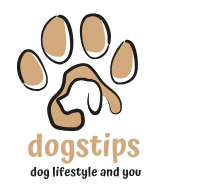

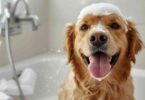
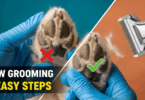


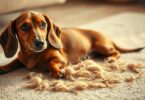

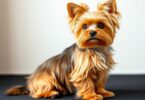
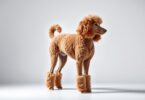
Leave a Comment